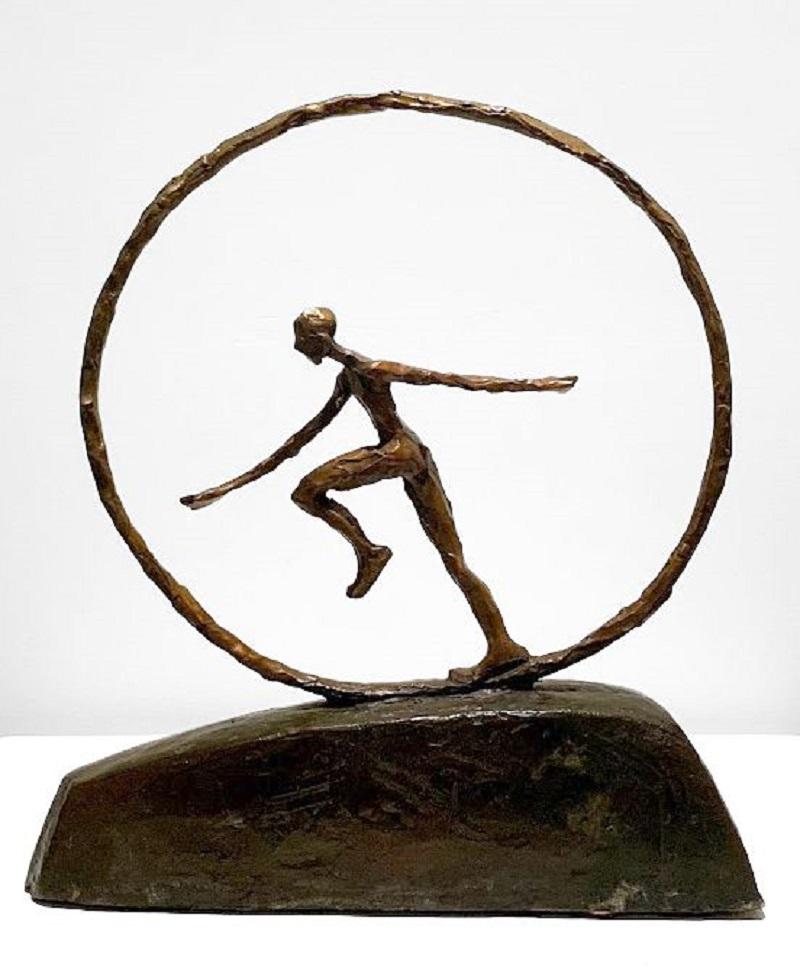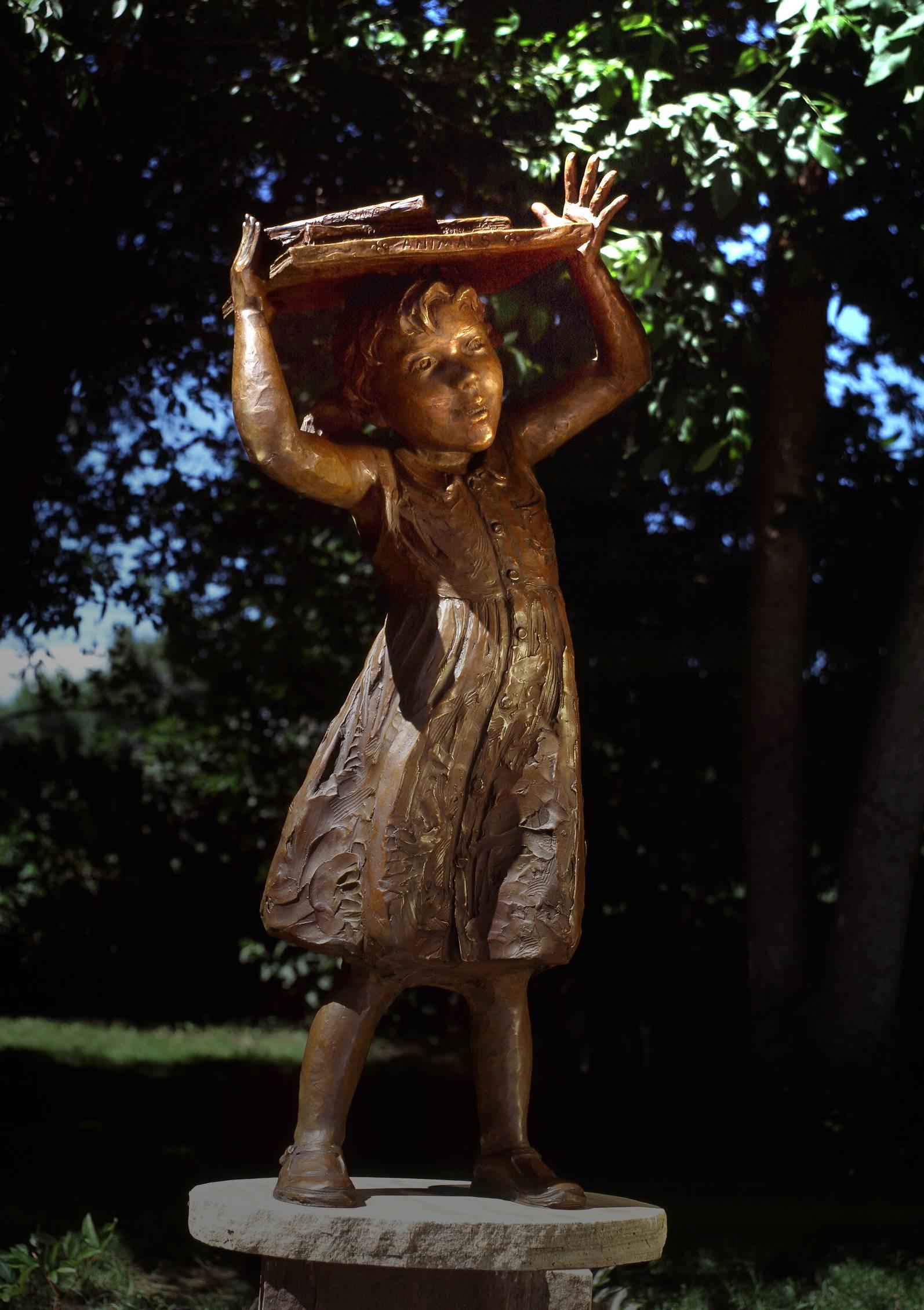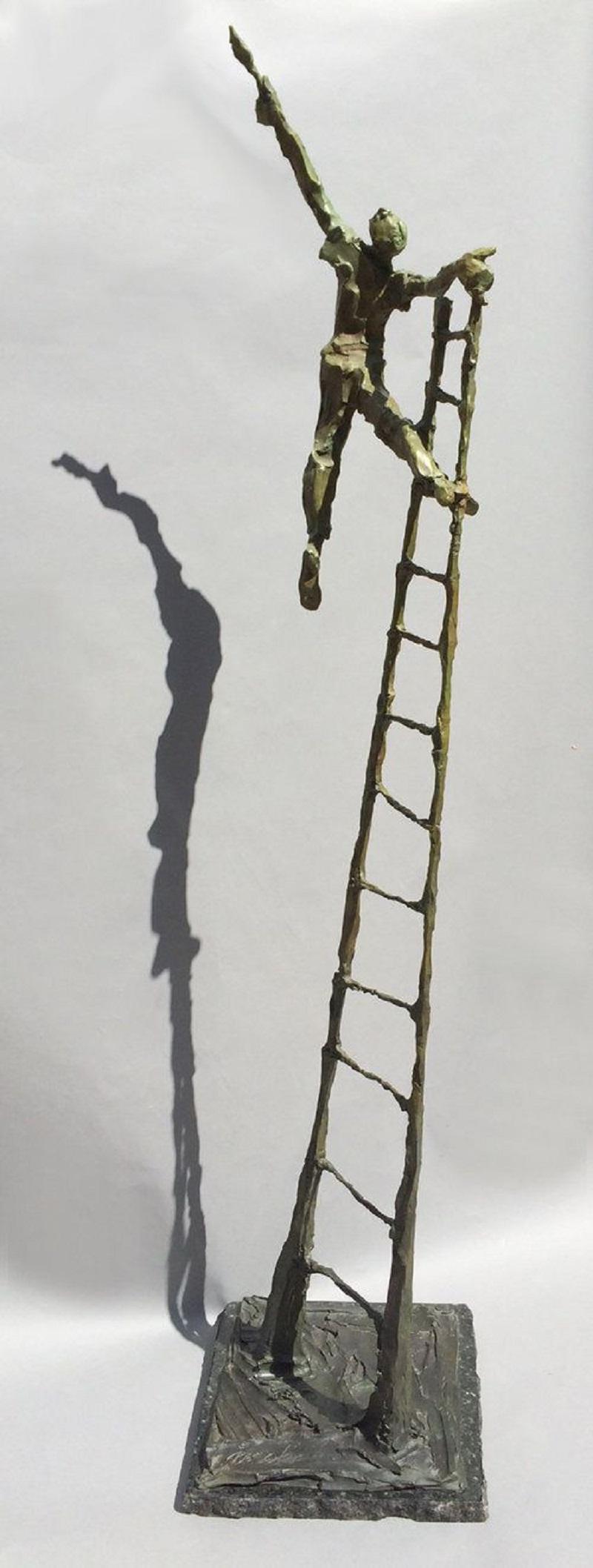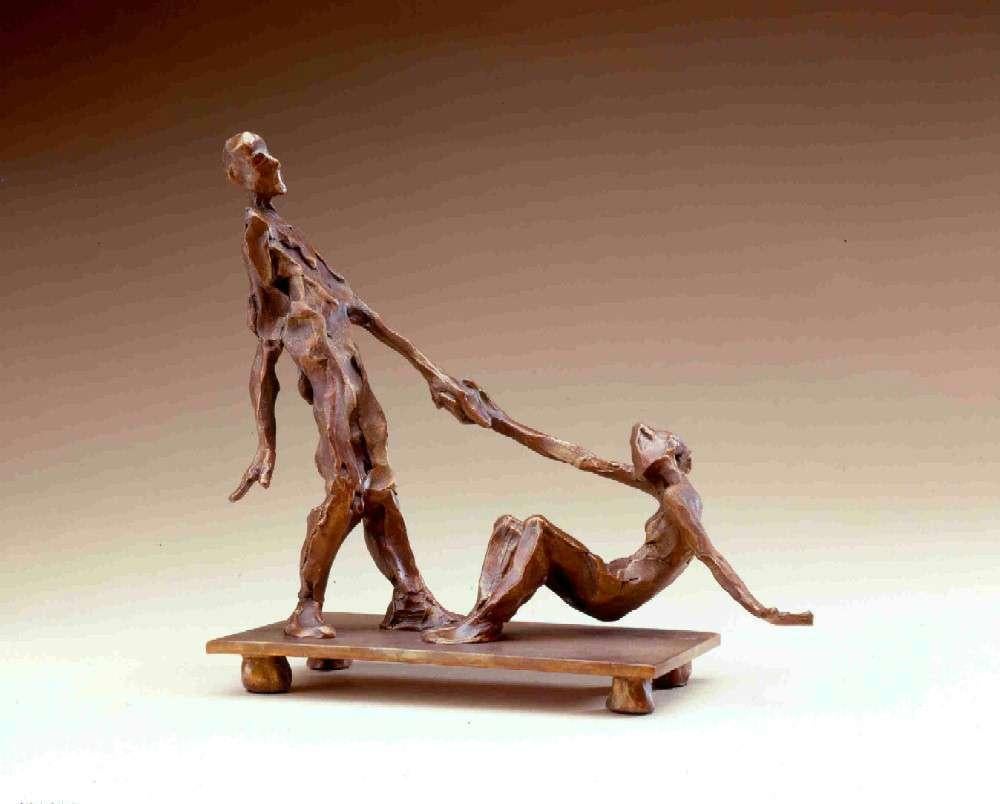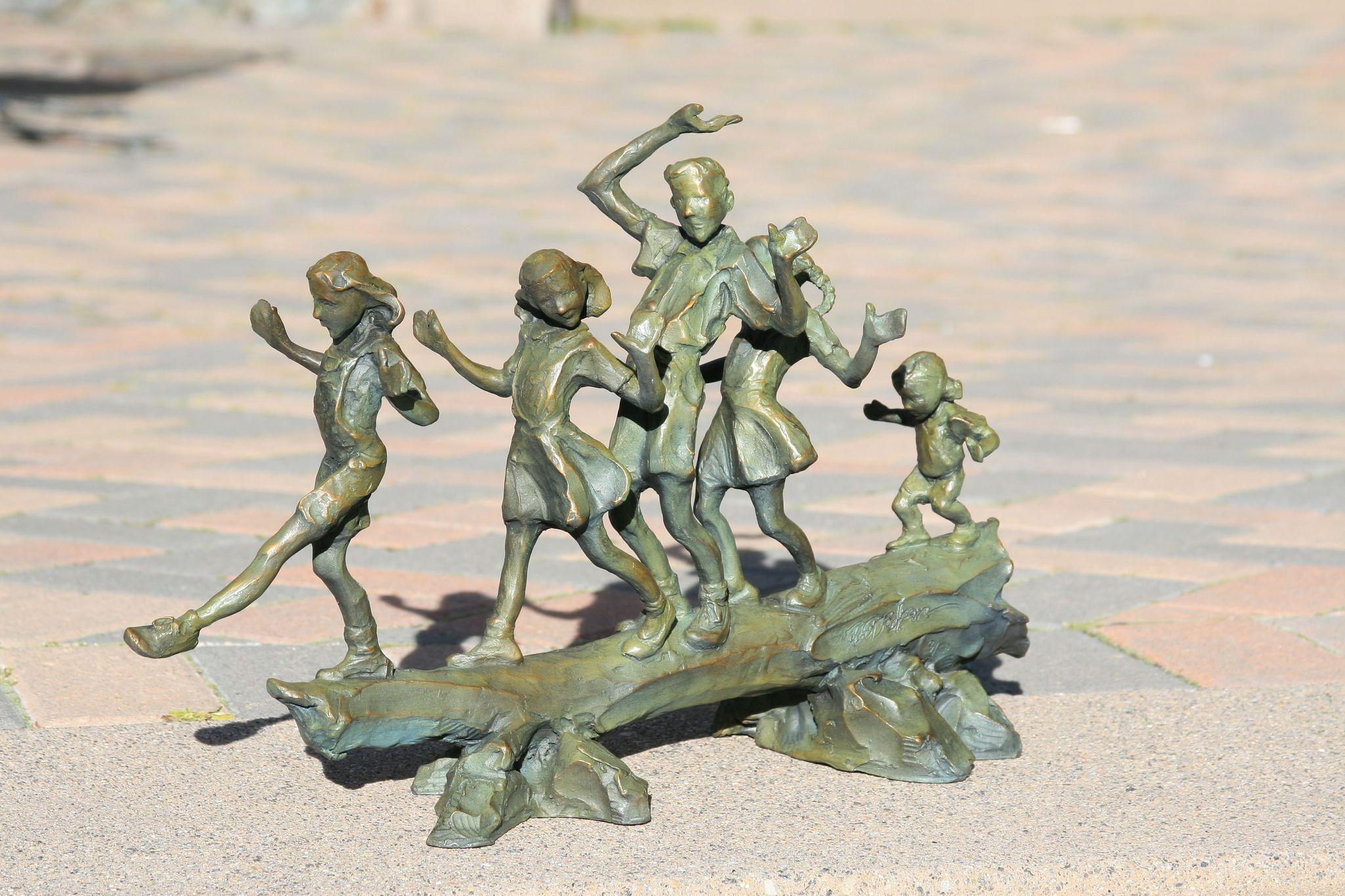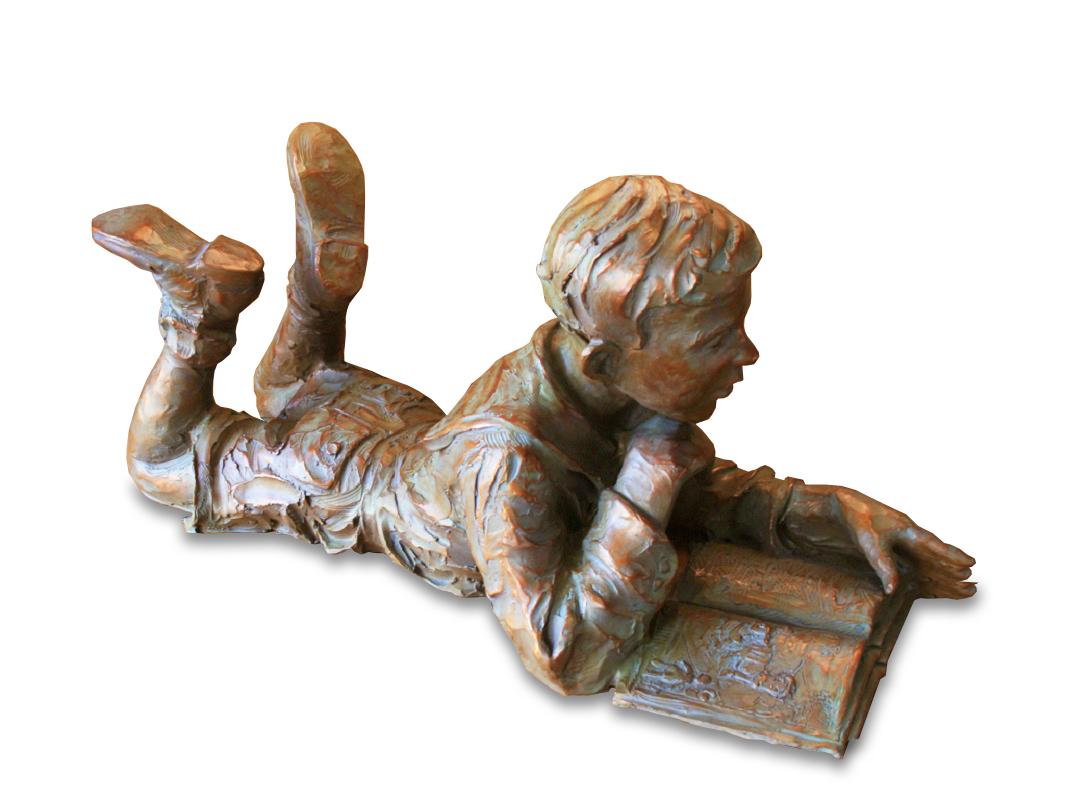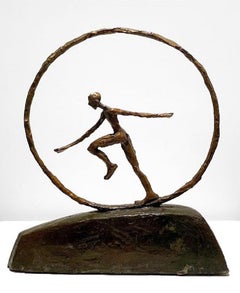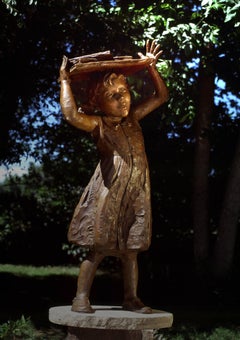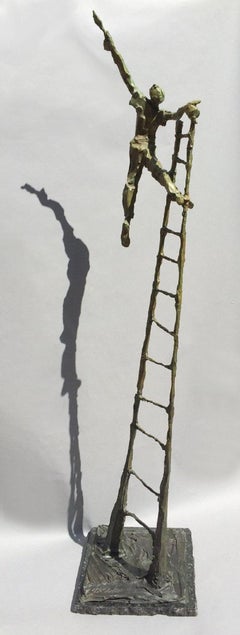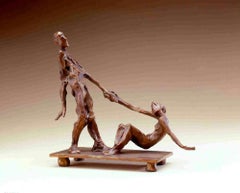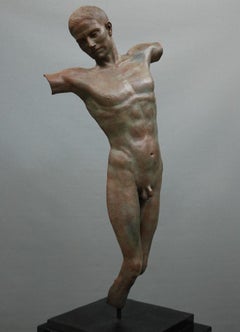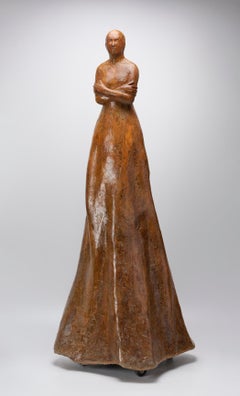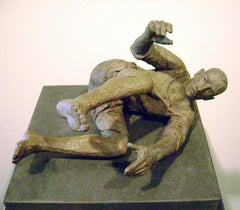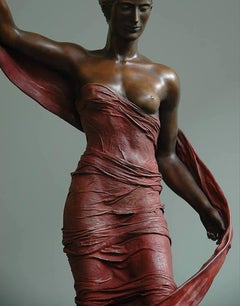Want more images or videos?
Request additional images or videos from the seller
1 of 5
Jane DeDeckerKeeping the Ball Rolling1990
1990
$38,900
£29,511.90
€33,837.12
CA$55,415.37
A$60,139.31
CHF 31,642.73
MX$730,694.26
NOK 396,160.98
SEK 373,021.61
DKK 252,646.53
About the Item
Life-size sculpture of a bare-footed boy balancing himself atop a ball.
- Creator:Jane DeDecker (American)
- Creation Year:1990
- Dimensions:Height: 90 in (228.6 cm)Width: 36 in (91.44 cm)Depth: 36 in (91.44 cm)
- Medium:
- Movement & Style:
- Period:
- Condition:
- Gallery Location:Greenwich, CT
- Reference Number:Seller: JDD01-31stDibs: LU181984013
About the Seller
4.7
Gold Seller
Premium sellers maintaining a 4.3+ rating and 24-hour response times
Established in 1986
1stDibs seller since 2013
171 sales on 1stDibs
Typical response time: 2 hours
- ShippingRetrieving quote...Shipping from: Greenwich, CT
- Return Policy
Authenticity Guarantee
In the unlikely event there’s an issue with an item’s authenticity, contact us within 1 year for a full refund. DetailsMoney-Back Guarantee
If your item is not as described, is damaged in transit, or does not arrive, contact us within 7 days for a full refund. Details24-Hour Cancellation
You have a 24-hour grace period in which to reconsider your purchase, with no questions asked.Vetted Professional Sellers
Our world-class sellers must adhere to strict standards for service and quality, maintaining the integrity of our listings.Price-Match Guarantee
If you find that a seller listed the same item for a lower price elsewhere, we’ll match it.Trusted Global Delivery
Our best-in-class carrier network provides specialized shipping options worldwide, including custom delivery.More From This Seller
View AllBefore the Sun Goes Down
By Jane DeDecker
Located in Greenwich, CT
Edition of 31
Category
2010s Contemporary Figurative Sculptures
Materials
Bronze
Check it Out
By Jane DeDecker
Located in Greenwich, CT
Life-size sculpture of a young girl carrying three books on her head.
Category
Early 2000s Figurative Sculptures
Materials
Bronze
Just Beyond
By Jane DeDecker
Located in Greenwich, CT
Edition of 17
Category
2010s Contemporary Figurative Sculptures
Materials
Bronze
When I'm Down
By Jane DeDecker
Located in Greenwich, CT
Limited edition figurative sculpture
Category
Early 2000s Figurative Sculptures
Materials
Bronze
Shortcut
By Jane DeDecker
Located in Greenwich, CT
Edition of 50
Jane DeDecker’s energetic and dynamic bronze sculptures serve as a reflection of her own life experiences and those of her closely-knit family. Her twelve nieces and ne...
Category
Early 2000s Figurative Sculptures
Materials
Bronze
Life is a Story
By Jane DeDecker
Located in Greenwich, CT
A boy reading a book.
Edition of 21
Category
2010s Figurative Sculptures
Materials
Bronze
You May Also Like
Duality of Vision Bronze Sculpture Classic Contemporary Art
By Margot Homan
Located in Utrecht, NL
Duality of Vision Bronze Sculpture Classic Contemporary Art
The sculptures of Margot Homan (1956, Oss, the Netherlands) show a perfect command of the old craft of modelling and sculp...
Category
21st Century and Contemporary Contemporary Nude Sculptures
Materials
Bronze
Rethinking It All
By Deborah Ballard
Located in Dallas, TX
This sculpture is cast and manipulated stone, fiberglass, iron, and casters.
Deborah Ballard is best known for conceiving of figures and groupings of figures who relate to one anoth...
Category
21st Century and Contemporary Contemporary Figurative Sculptures
Materials
Cast Stone, Iron
Bronze #85 by Hanneke Beaumont
Located in Woodmere, OH
Bronze #85 by Hanneke Beaumont
Beaumont's sculptures are realized in terracotta, bronze and cast iron, and she is known for sculpting figural life-si...
Category
Early 2000s Figurative Sculptures
Materials
Bronze
Rewind Bronze Sculpture Mythology Classic Contemporary
By Margot Homan
Located in Utrecht, NL
Rewind Bronze Sculpture Mythology Classic Contemporary
The sculptures of Margot Homan (1956, Oss) show a perfect command of the old craft of mod...
Category
21st Century and Contemporary Contemporary Figurative Sculptures
Materials
Bronze
"The Seeker, " Sculpture
By Bill Starke
Located in Denver, CO
Bill Starke's "The Seeker" is a limited edition (#3/50), bronze sculpture created by Bill Starke depicting a male figure peering down through a small opening beneath him.
About th...
Category
2010s Realist Figurative Sculptures
Materials
Bronze, Metal
The Ties that Bind
By Jane DeDecker
Located in Loveland, CO
"The Ties that Bind" by Jane DeDecker
Cast bronze depiction of a father taking a time out from playing ball to help tie his child's shoe.
36" x 44" x 31" limited edition of 17, sign...
Category
2010s Impressionist Figurative Sculptures
Materials
Bronze
More Ways To Browse
Life Size Sculpture
John Bratby
John Budicin
John Thomas Serres
John Wootton
Jon Schueler
Joseph Kirkpatrick
Julius Paul Junghanns
Jungblut Johann
Kate Rivers
Keith Haring Japan
Keith Haring Paris Review
La Rochelle Painting
Ladybug Painting
Lake Michigan Oil Painting
Lake Placid Poster
Landscapes With Purple Sky
Laporte Georges
